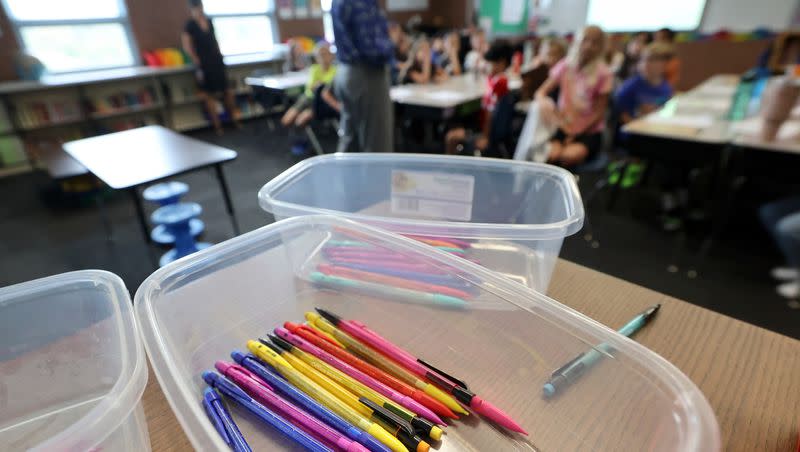What did the state’s Oct. 1 headcount reveal about Utah public schools?

Enrollment in Utah public schools dropped by nearly 2,000 students statewide from the previous year, dipping to 672,662 or a 0.3% decrease, according to the new data from the Utah State Board of Education.
Fall 2023 enrollment figures reflect the most significant declines in enrollment year to year among elementary school-age students.
Meanwhile, enrollment in public charter schools continued to climb, increasing by 513 students over the previous year.
All told, just under 1 in 5 Utahns is a public school student.
Here’s a closer look at the data and trends:
Utah school districts large and small
The state’s largest school district is Utah County’s Alpine School District, serving 84,710 students. It is followed by Davis School District at 70,703 students; Granite with an enrollment of 58,312; Jordan at 57,436; and Nebo at 43,672 students.
Combined, the five largest school districts serve 314,833 students, nearly 47% of all public school attendees across the state. Alpine School District alone serves more than 12% of the state’s students.
On the other end of the spectrum, five Utah school districts serve fewer than 1,000 students each. Daggett is the smallest at 177 students. Others include Piute School District at 262 students; Tintic at 267; Wayne at 402 and Rich at 522.
Granger High School in the Granite School District is the largest school in Utah with an enrollment of 3,447. The smallest is Grouse Creek Elementary School in Box Elder County with five students. West Desert High School in Snake Valley has eight students in grades 7-12.
Kindergarten enrollment’s mixed tale
The state experienced a 3% decline in kindergarten enrollment and 4.4% drop in first graders from last year, an indication of Utah’s declining fertility rate. Fertility in Utah — and the United States — has steadily declined almost every year since the Great Recession in 2008, according to the Gardner Policy Institute at the University of Utah.
But the Utah Legislature’s passage of HB477, which made full-day kindergarten available for all public elementary schools, reserving a half-day option, changed the landscape of grade K.
Seventy-seven percent of enrolled Utah kindergartners opted for full-day kindergarten with only 23% of students enrolled half day.
“We have seen a great demand for full-day kindergarten in Utah and we are glad that the state has invested in providing this option for Utah families,” said State Superintendent of Public Instruction Sydnee Dickson in a statement. In several districts such as Grand, Emery, and Daggett, 100% of kindergarten students participate in the full-day option.
According to the Utah State Board of Education, several studies show students in full-day kindergarten are less likely to need academic intervention in later grades. They also tend to progress in mathematics and reading at higher rates than their half-day kindergarten peers.
Related
Continued growth among charter schools
While overall school enrollment slightly dropped overall this fall, enrollment in the state’s public charter schools grew to 79,245 students.
Charter school students comprise nearly 12% of the statewide student enrollment. The collective enrollment of all Utah charter schools is inching up on the numbers of students served by the state’s largest school district, Alpine, which has an enrollment of 84,710.
In Utah, charter schools are public schools. They have appointed boards of directors and in most cases, operate independently of school districts.
Depending on how they are counted — some schools have multiple campuses or satellite campuses — there are currently 142 to 145 charter school campuses statewide, according to the Utah Association of Public Charter Schools.
Other notable demographics
The number of students with disabilities enrolled in Utah public schools climbed nearly 13% — by 3,784 students — over the previous year, according to the Oct. 1 headcount.
Students considered economically disadvantaged also increased by 2,361 students year to year, a 1.2% upsurge. This subset of students makes up 30% of the entire public school population.
Students requiring English language learning services remained approximately the same at 9% of the student population numbering 59,147 students.

